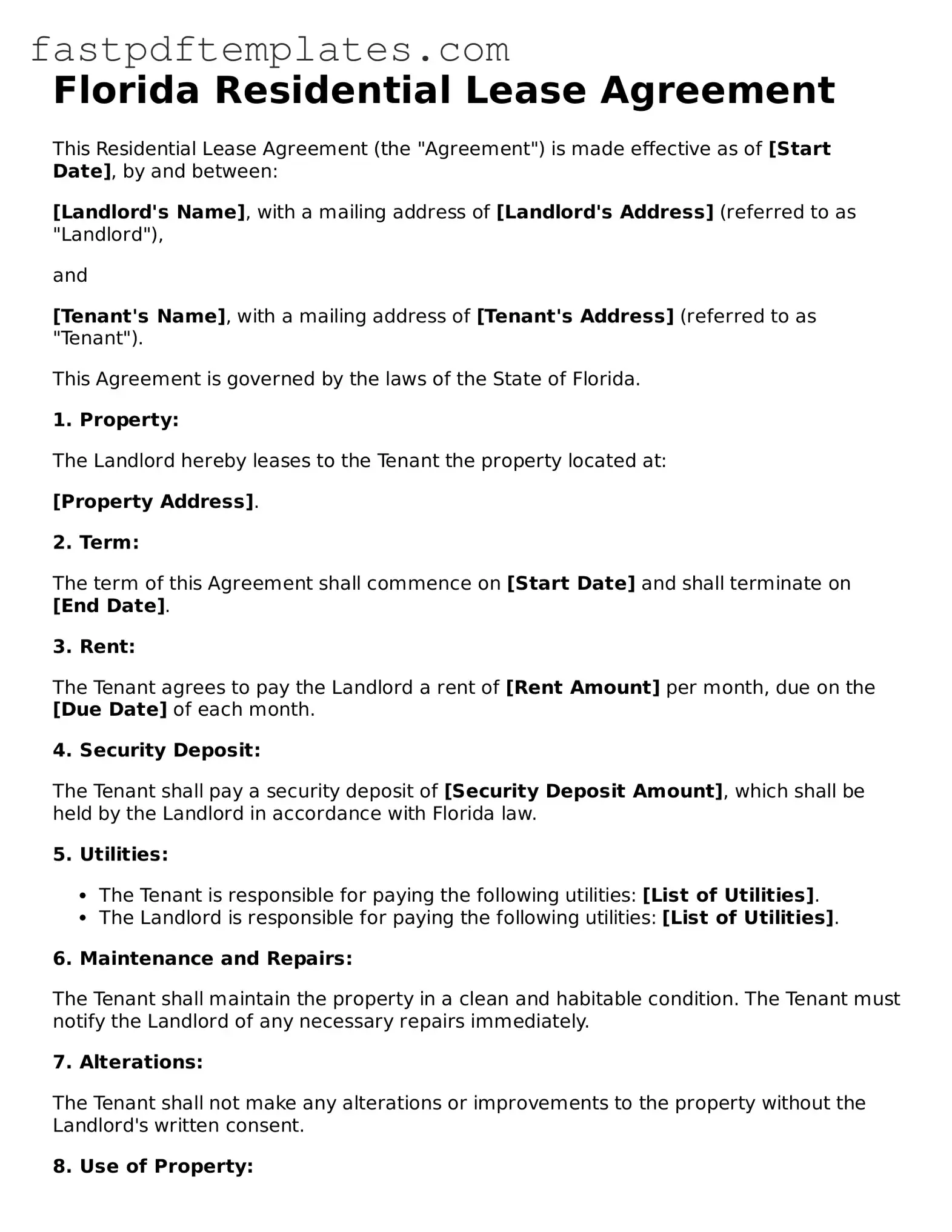Florida Residential Lease Agreement
This Residential Lease Agreement (the "Agreement") is made effective as of [Start Date], by and between:
[Landlord's Name], with a mailing address of [Landlord's Address] (referred to as "Landlord"),
and
[Tenant's Name], with a mailing address of [Tenant's Address] (referred to as "Tenant").
This Agreement is governed by the laws of the State of Florida.
1. Property:
The Landlord hereby leases to the Tenant the property located at:
[Property Address].
2. Term:
The term of this Agreement shall commence on [Start Date] and shall terminate on [End Date].
3. Rent:
The Tenant agrees to pay the Landlord a rent of [Rent Amount] per month, due on the [Due Date] of each month.
4. Security Deposit:
The Tenant shall pay a security deposit of [Security Deposit Amount], which shall be held by the Landlord in accordance with Florida law.
5. Utilities:
- The Tenant is responsible for paying the following utilities: [List of Utilities].
- The Landlord is responsible for paying the following utilities: [List of Utilities].
6. Maintenance and Repairs:
The Tenant shall maintain the property in a clean and habitable condition. The Tenant must notify the Landlord of any necessary repairs immediately.
7. Alterations:
The Tenant shall not make any alterations or improvements to the property without the Landlord's written consent.
8. Use of Property:
The property shall be used solely for residential purposes and by no more than [Number of Occupants] persons.
9. Termination:
Either party may terminate this Agreement upon giving [Notice Period] written notice to the other party.
10. Governing Law:
This Agreement shall be governed by the laws of the State of Florida.
IN WITNESS WHEREOF, the parties have executed this Residential Lease Agreement as of the date first above written.
___________________________
Landlord's Signature: [Landlord's Name]
___________________________
Tenant's Signature: [Tenant's Name]
